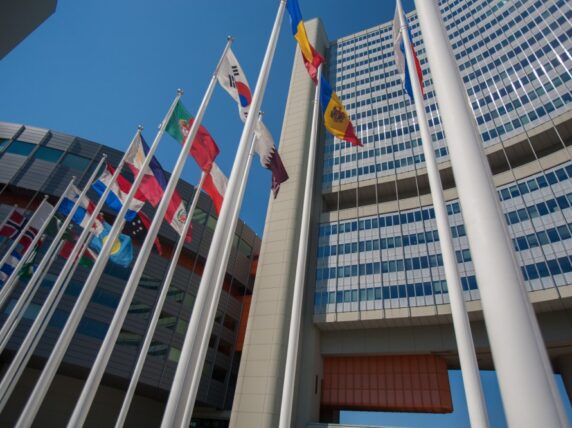The Participatory CLD Assessment Tool: Helping INGOs shift power
International Development, as we know it, is changing.
In a field abuzz with conversations around shifting power, localisation, community-led development and decolonisation, the “nothing for them, without them” slogan, coined by the disability rights movement, is being embraced widely by funders and international NGOs alike. Yet, what does it mean for us in our everyday work? How can we shift our way of thinking, doing and being to work in true partnership with communities and local organisations?
In January 2021 the Movement for a Community-led Development (MCLD) launched the Participatory CLD Assessment Tool. Co-developed and tested by INGOs and CSOs from around the world, this learning tool has seen over 1250 downloads of its excel version, and many others, who find Excel sheets intimidating, are using its mobile and tablet friendly version.
We launched the tool in English, French and Spanish. Recently, USAID, with its partner Creative Centre for Community Mobilisation (CRECCOM) – a Malawian NGO, translated it into Chichewa to make it accessible at the community level. Right now, organisations are translating the tool into Swahili and other local languages.
What is the Participatory CLD Assessment Tool?
The tool is a learning aid that enables organisations to think about how community-led their current programming is. Through conversations between program and MEL teams, global and local staff, partner organisations and community members, it helps INGOs, funders and even local CSOs identify areas of strength, as well as those that need strengthening.
Subscribe to our newsletter
Our weekly email newsletter, Network News, is an indispensable weekly digest of the latest updates on funding, jobs, resources, news and learning opportunities in the international development sector.
Get Network NewsThe tool is designed as a rubric, a qualitative scale that sets standards for performance. The rubric takes organisations through a series of questions around nine dimensions: participation, inclusion and voice, local resources and knowledge, accountability, responsiveness to context, collaboration, working with sub-national governments, sustainability and exit strategies, facilitation and monitoring and evaluation practices.
Why did we develop the tool?
Very simply, we developed the tool because we were asked to. In February 2019, MCLD started a collaborative research project to understand the impact of community-led development. Our INGO members were tired of being asked for evidence that CLD works and decided to scour CLD evaluation reports for the most pertinent evidence.
But, as 35 professionals from 23 organisations embarked on this journey together, we realised that we had a lot of work to do. Despite being members of MCLD, we all understood and practised CLD differently. So we went back to the basics and began unpacking what CLD is, how it translates into practice during the life-cycle of a program and what organisations are doing when they say they are practising CLD.
After extensive discussion, consultation and literature review – as well as drawing inspiration from the Evidence Principles and Checklist Tool developed by Bond – we created a rubric as a scoping tool to understand the current practice of CLD.
In November 2019, we presented this at the World Bank’s Global Partnership for Social Accountability Conference for feedback. We also shared it extensively with MCLD members globally. Funders, INGOs and local CSOs asked to be informed when we had our research results, and requested we turn this rubric into a tool for them to see how community-led their work is.
So we did exactly that. After a lot of feedback and a year of intense piloting with organisations of different sizes, scopes and geographies, the tool was launched.
Who can use the tool and when?
Anyone who is interested. We developed this tool for INGOs, but over the last year it has been adapted and used by funders, by local CSOs, and recently even by municipalities.
Organisations can use the tool at various stages in the life-cycle of a program. They can use it to design programs (to be true to the spirit of CLD), during mid-term reviews, at the end of a program or even post-exit. In fact, organisations can use it multiple times to see how the nature of their programming is changing over the lifespan of a programme. Large INGOs can also use the tool for portfolio reviews or for simply creating a shared understanding of values like inclusion and accountability within their teams.
What did we learn from the first year of the tool?
We have seen genuine intent to become more community-led, and organisations are looking for practical tools to do this. Immediately after we launched the tool in 2021, we were flooded with requests for training on the tool. So we spent the next six months developing a training module that emphasised the participatory process that underpins the tool.
Today, more than 150 professionals from different parts of the world have completed certificate training on the tool. Hundreds of others are using it without training. One year of the tool has shown us that CLD is hard work. But it is possible and we as organisations can truly shift power.
The Movement for Community-led Development (MCLD) is a global consortium of 1500+ local civil society organisations (CSOs) and 70+ INGOs committed to Shifting the Power in international development.
This blog was written with contribution from with the Scoping sub-group of The Movement for Community-led Development. Specifically Holta Trandafili (World Vision), Diana Delgadillo Ramírez (The Hunger Project Mexico), Elene Cloete (Outreach International), Nelly Mecklenburg (Institute for State Effectiveness), Janet Edmond (Conservation International) and Martha C. Cruz Zuniga (The Catholic University of America).
Category
News & views



